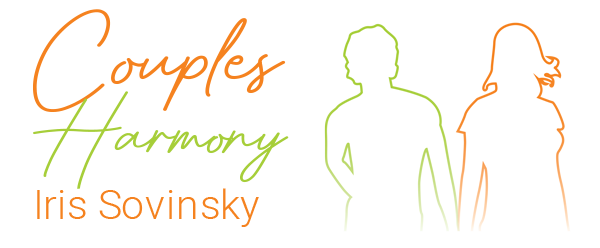Key Concepts in Couples Harmony
Some of the concepts I have used on this site are well known in the world of therapy in general and in the coaching profession in particular, and some are original, the result of my work and experience.
This page will clarify the concepts mentioned on the site and in the content and resources for visitors and readers.
The Inner Encounter is a one-time two-hour session, designed for releasing emotional blocks and for healing general and complex traumas. It is a fascinating, healing and enriching experience of meeting ourselves.
The inner voices in our subconscious are closer to our consciousness than we think. However, many of us have no idea how to use these inner voices to improve our quality of life. In The Inner Encounter we connect, for the first time, to four parts of the subconscious, to enlist their cooperation in creating the life we want.
Through listening to the inner voices within our psyche and conducting a dialogue with them using very simple guided imagination, we discover the things that bother us, the reasons for the situations where we are stuck, the basic needs we have failed to meet and why we have not been able to meet them. This information comes to us clearly through the internal conversation, and helps us bring order into the relationships between the parts of the psyche.
During the inner encounter session we balance and heal four of the parts of the subconscious, and create partnership and balance between them to produce harmony in their joint action. As a result we will feel our center becomes stronger and our lives will have greater clarity.
As someone who is experienced in these processes, my role as a companion in the inner encounter session is to help you understand what is happening inside your psyche, and to enable different ways for action in internal situations that come up.
Depth Coaching is a coaching method that works with the parts of a person’s subconscious. Similar work is also being carried out in the United States, but my particular way of working with this method is something I have developed myself.
At the core of the method is building the connection between our conscious awareness and the internal parts that exist in the psyche of every one of us (the subconscious). For example, when our “inner child” part is under stress, we feel and experience their stress as our stress, and we get stressed. In Depth Coaching we learn that there are several ways to respond to the “inner child”, to calm them, and then we can also relax accordingly.
In Depth Coaching the coachee learns to identify and interact with six parts of his psyche, that are part of his subconscious. We listen to these six parts together and help them release unnecessary baggage that has accumulated over the years. We learn to recognize and fulfill the needs of the different parts within our psyche, and remind them of their special abilities and how they can be used. In this way, both the parts within us and our connection to our inner strengths are empowered. In addition, from working with these parts, the relationship and partnership between the parts of our subconscious are optimized, as well as the relationship between our subconscious and our conscious awareness.
The process of Depth Coaching includes imparting knowledge to the coachee on how to manage his relationship with the parts of his subconscious and how to help that relationship thrive throughout his life. This is a tool for lifelong use.
In the work with the parts of our subconscious it is possible, within a relatively short period of time, to achieve a good balance of all these internal parts, and then we can finally enjoy the maximum capabilities of each part by itself, and of all of them as a whole. When all the parts of our subconscious work together in harmony, we experience the silence that allows us to hear our “I”, and we can let it work for us from our inner truth. Our understanding of ourselves also improves, together with our performance in life and our relationships with ourselves, with the environment and with our partners.
The masculine and feminine parts are parts of our subconscious.
The inner feminine part is responsible for providing ideas and vision, and is our connection to spirit. The inner masculine part is responsible for the execution of the vision in reality and is our connection to matter. The point of connection between them is where spirit and matter meet within us – a very important place for a human being.
Optimal cooperation between these parts enables us to realize our vision and find balance between spirit and matter.
The relationship between these parts is reflected in our own relationships with our partners. Its improvement leads to improvements in our own relationships as well.
Our subconscious mind is made up of functional organs just like our physical body. Just as the heart and kidneys have their roles, their structure corresponds to those roles and they also have abilities and needs – so every part of the psyche also has its role, abilities and needs, and is designed to fulfill its role.
Various traumas and habits that we accumulate during life interfere and disrupt the functioning of the parts of the psyche and their ability to cooperate with each other.
The processes of healing the psyche help these parts return to optimal function. This is the reason that “depth coaching”, which works with them directly, is found to be extremely effective in healing them.
Dr. Rudolf Steiner, the father of anthroposophy, developed multidisciplinary knowledge – part of it theoretical and part of it practical. Part of the anthroposophical knowledge he contributed relates to the inner structure of man in its various layers, including the structure and functioning of the psyche. In anthroposophical teachings, the layers of man are referred to as “bodies”.
In 1910, Steiner held a series of lectures including four lectures on psychosophy. Psychosophy is the basis for anthroposophical psychology and psychotherapy; the introduction, the basic concepts and the method for its practical foundation in the future. For historical reasons, which Steiner also anticipated, the conditions required for the understanding and practical use of psychosophy were not ripe until the second part of the 20th century. In addition, all the theoretical content that Steiner taught between 1883 and 1925 can be considered expanded psychosophy.
The starting point of psychosophy is the ability to create a perspective between the center of consciousness (the “Self”) and the phenomena of the psyche, such as feelings, sensations and experiences at the time of their occurrence. Based on this perspective, direct observation of the psychological processes becomes possible. Since he could not publish his method for creating the perspective and the process of observation at the time, Steiner left his request, demand and will to future generations, when the conditions would be ripe for it, and he even indicated the end of the 20th century as the time when such a development would be possible.
The Couples Harmony method is based on Dr. Carl Jung’s concept regarding the “anima” (the inner feminine side of the man) and the “animus” (the inner masculine side of the woman), which are found in the human psyche, on the anthroposophical approach of Dr. Rudolf Steiner concerning the development of the individual, and on Buddhist knowledge and the importance of compassion in relationships.


